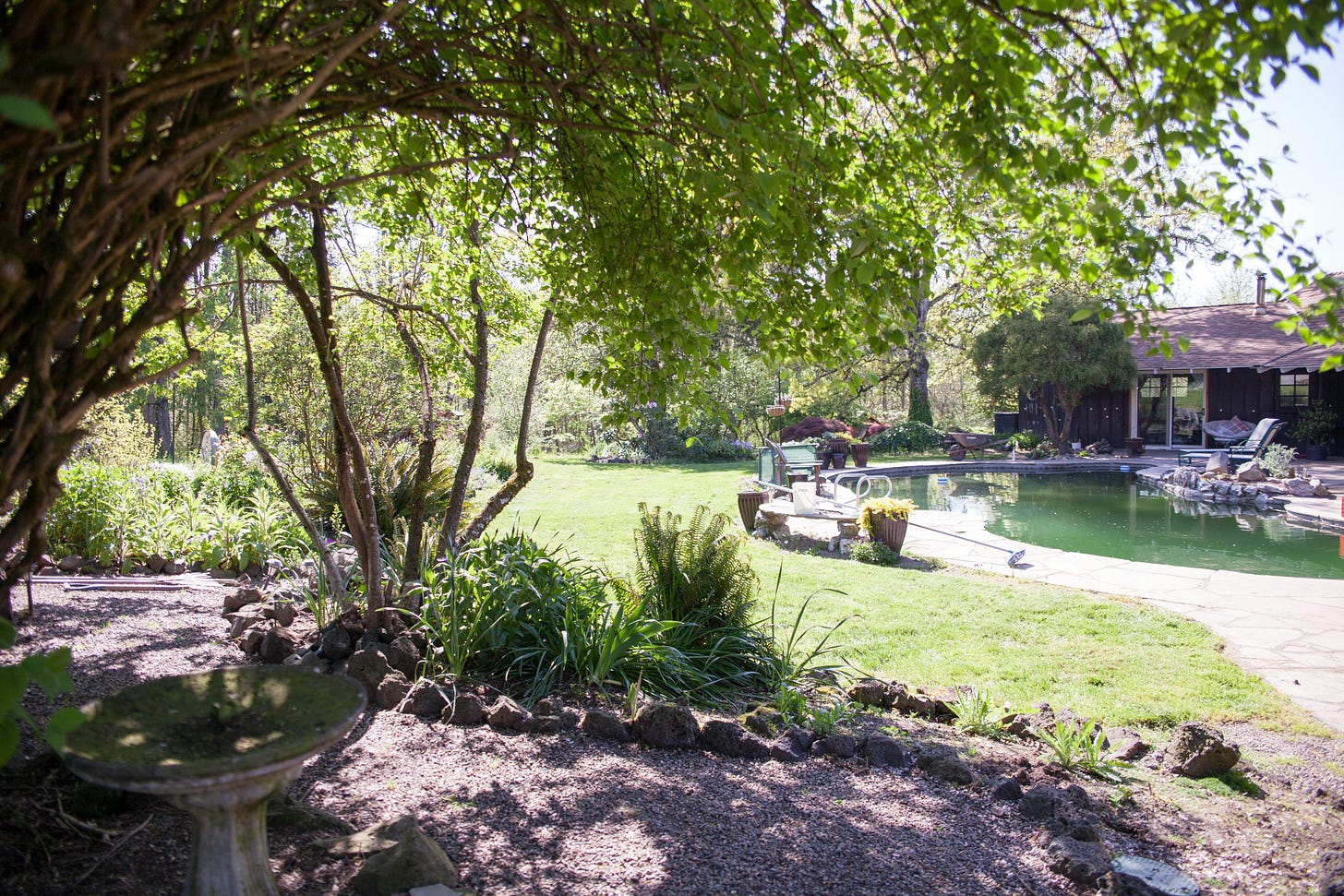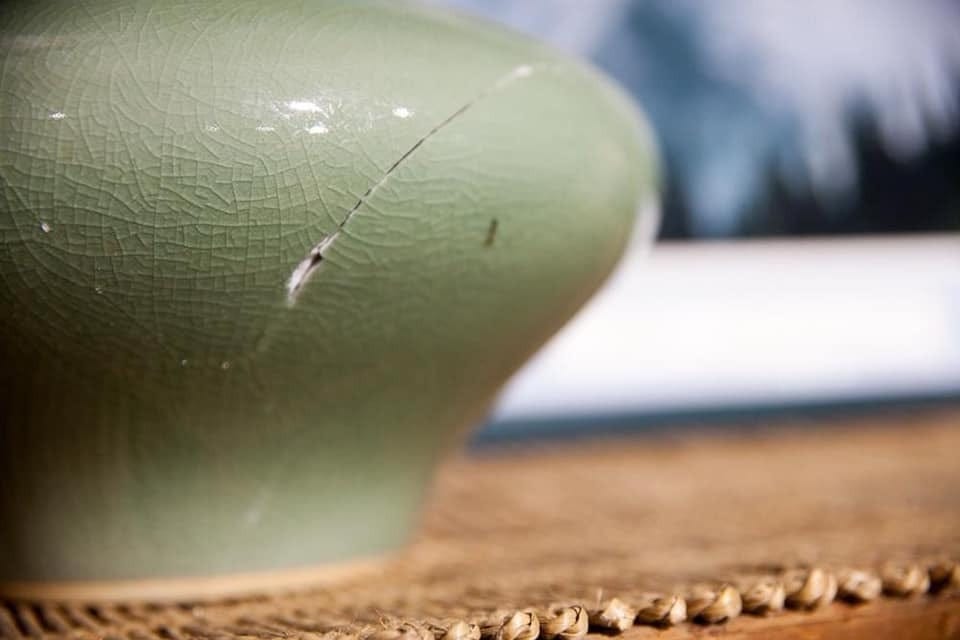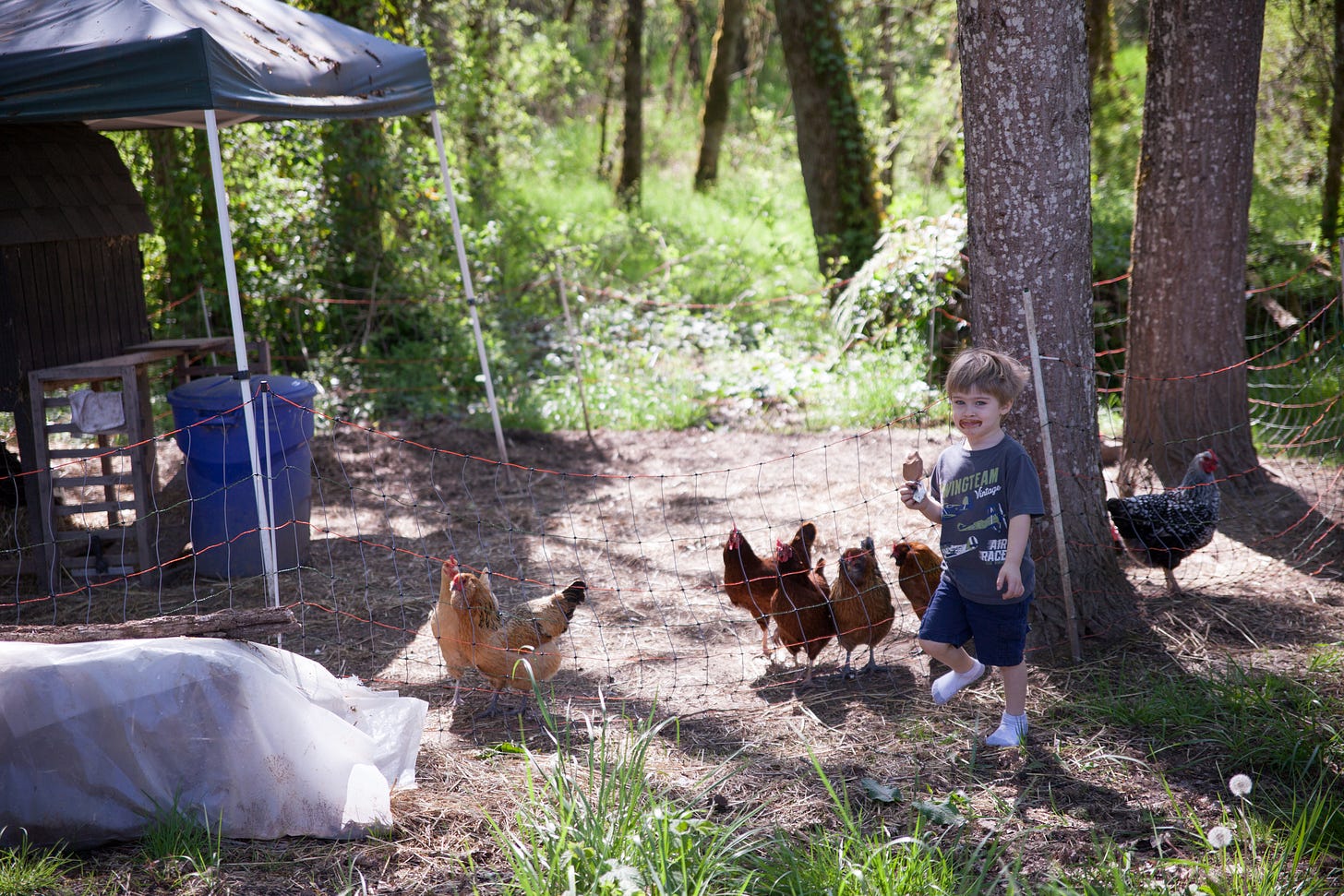I was staying in a cottage adjacent to a mid-century, sprawling rambler that was clearly a sweet pad in the 1950s and 1960s. There was a pool just outside the sliding glass door, and beyond that acres of land with loosely manicured gardens and an enclave for chickens. It was chic, rustically modern, and grounded.

An experienced, no nonsense German shepherd dog lay on the warm stone next to the pool. He wanted to be where he could see me (and declined the offer to be photographed). I talked to him through the open sliding glass door. He didn't care for small talk and would shift uncomfortably before getting up to relocate, still where he could see me. I followed his cues and talked with him about heavy things. Things that neither of us could have carried on our own. Those conversations pressed on his spirit enough that he could momentarily close his eyes in that peaceful squint that dogs do so well.
I was in this place to help care for my grandmother, who was entering hospice. This cottage was my place to crash after a long day of preparing for death (because hospice in this case started only two weeks before her death and we all knew it was coming) and soaking up life. This vase caught my attention.

From across the room it was a beautiful piece that could have been a family heirloom or a find at HomeGoods. I didn't know. It was when I crossed the room and stood near the sliding glass door (so I could talk to my GSD friend) that this crack called for my attention.
One day, this vase lay on the floor, broken. I could count four large pieces that had come apart and were now back together, with a few smaller pieces filling the gaps. The vase was still beautiful. It probably didn't hold water as well as it once did. It could surely hold dry things. It could surely remain an object of beauty.
I thought of the Japanese art of kintsugi. When pottery is broken, like this vase, kintsugi is a method that mends the pottery with a lacquer. The lacquer is often colored with gold powder, and sometimes the powder is silver. The result is a piece that is once again whole, now with the cracks as decorations rather than flaws.
Kintsugi is more than a technique - it's a philosophy. In this way of thinking, the life cycle of a breakable object involves . . . well, breaking. And when that break happens, kintsugi regards the break and the repair as part of the object's history. The cracks become prominent. Instead of something to hide or disguise, the repair becomes the defining feature of the piece.
We are all breakable.
This vase did not receive the full kintsugi treatment with gold or silver. I was curious about the history of this piece. I wondered if it was an especially meaningful vase. I wondered what kinds of family members it had passed through, or if it really was mass produced and bought at HomeGoods. I studied the cracks while giving thought to how my own life had come apart and been bonded together - many, many times.
I saw this vase as a symbol of heartache and pain. It was every breakup, every death, every diagnosis, every day of providing hospice care. It was every rescue and foster. It was the days when funds were low and needs were high. It was the fatigue and the feeling of desperation, knowing that I needed to be able to do just this one more thing and feeling like I couldn't do any more. I felt every one of those cracks. I feel them because I see them up close. I lived through the breaks.
I also picked up all of those pieces and brought them back together. I glued. I lacquered. I did what was necessary to keep them whole. From across the room, my vase looks lovely. It looks unmarred. Maybe even something other people would aspire to have.
I know the history of my vase. I know when it has broken, and how. I know how long it took and what kinds of effort and tools were necessary to assemble it again.
I know the parts that were once broken and since mended are stronger now, but in a brittle, fragile way.
What does your vase look like?

The Boy came with me on this journey, which was about a week long. There were two reasons. One is that I am his primary caregiver and arranging care with someone else would have been stressful for both of us in ways that we wouldn’t have coped with well. The other is that I didn’t want to hide anything about dying and death, and I wanted this to be a normal part of the life cycle for him.
I carefully considered what would be developmentally and personally appropriate for him to witness. He was included in most things, and it probably won’t surprise you that he was the only male involved. He mostly provided a link to the future with his antics and jokes. He also gave hugs and transported supplies from one room to another.
We returned three weeks later for my grandmother’s burial.
He is 11 years old on the day I am writing this. In a few weeks he’ll be 12. Illness, aging, dying, and death are going to continue to be a part of his life through those hie loves and cares about, and it feels important and necessary to guide him in as much of this as I can, while I can.



